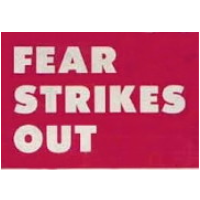California Three-Strikers Rush to Prison Exits and Don’t Come Back

California’s three-strikes law, passed in 1994, proved to be a very expensive way to fight crime and a heavy contributor to inhumane overcrowding in prisons. But its proponents never stopped touting the benefits of keeping these, apparently, likeliest of repeat offenders from offending once again.
So, what happened when voters passed Proposition 36 and rewrote the three-strikes rules to be less harsh in 2012? A third of the 9,000 prisoners serving three-strikes sentences were eligible for release and, as of a month ago, about 2,100 got out.
If you didn’t read about the rampage they went on, it’s because they didn’t. Some of them did, indeed, commit crimes anew and 4.7% were returned to lockup within 18 months, according to the New York Times. During that same period of time, however, all the other California prisoners who were released returned at a 45% rate.
Prop. 36 allows reduction of previously mandatory 25-to-life prison sentences for third-strikers who commit non-serious, non-violent felonies, and applies the change retroactively to those already in prison.
The Times didn’t offer up any explanations for the low recidivism rate, but a report (pdf) from Stanford University’s Three Strike Project last April charted the early trend and attributed it to several organizations and institutions that focused efforts on the Prop. 36 releases.
After 9.2 months, the project found a recidivism rate of 1.3%, compared to 49.2% for all other prisoners released during that period. That may seem like a rather short period of time to measure the success of any measure, but the report points out that recidivism is traditionally highest during the first 90 days. The California Department of Corrections and Rehabilitation (CDCR) says that 75% of recidivists commit their re-entry crime within a year of release.
The next lowest recidivism rate, according to the report, belonged to “lifers” released on parole (6%). Normally, there aren’t a lot of those running around, but Governor Jerry Brown, who has the final say on parole, has a very generous record. The Los Angeles Times crunched the numbers at the end of 2014 and calculated that Brown had approved more paroles, 1,963, than his four predecessors over a 27-year period. Only 33 returned to jail, a 1.7% recidivism rate.
A study (pdf) by the Stanford Criminal Justice Center on the recidivism rate of paroled lifers suggested a reason for the low rate of return that might be applicable to three-strikers: “As a general matter, people age out of crime.”
Both of the anecdotal stories that the New York Times used to illustrate its story were of older men. One was 58 and had been in jail for 18 years after two robbery convictions and a third strike for a small packet of heroin. The other man had spent 36 of his 49 years behind bars, 18 of those years for a third-strike possession-of-drugs conviction.
Prop. 36 was just one means by which California has gone about reducing its prison and jail populations to near-manageable levels. The state adopted a policy of redirecting low-level felons to county jails a few years back and adopted Proposition 47 last year, which redefined some property crimes and drug possession from felony to misdemeanor.
Theories abound for the reasons behind a national decline in serious crime: aging baby boomers, the popularity of Prozac, a reduction in child lead exposure, abortion legalization, the rise of in-home tech, a decline in the popularity of crack, an increase in the incarceration rate, more cops on the beat, immigration and gentrification are among the favorites.
The same list can be applied to the California experience of moving people out of its prisons and jails with no significant gain in crime.
–Ken Broder
To Learn More:
California Convicts Are Out of Prison After Third Strike, and Staying Out (by Erik Eckholm, New York Times)
California Quietly Continues to Reduce Mass Incarceration (by Jessica Eaglin, Brennan Center for Justice)
Prison Reform, Proposition 47 and the California Shell Game (by Nancy A. Heitzeg and Kay Whitlock, Truthout)
Proposition 36 Progress Report (Stanford Law School Three Strikes Project) (pdf)
State Supreme Court Retools Three-Strikes Law to be More Like Baseball (by Ken Broder, AllGov California)
Judge Orders Release of First Inmate under New Three-Strikes Law (by Ken Broder, AllGov California)
- Top Stories
- Controversies
- Where is the Money Going?
- California and the Nation
- Appointments and Resignations
- Unusual News
- Latest News
- California Forbids U.S. Immigration Agents from Pretending to be Police
- California Lawmakers Urged to Strip “Self-Dealing” Tax Board of Its Duties
- Big Oil’s Grip on California
- Santa Cruz Police See Homeland Security Betrayal in Use of Gang Roundup as Cover for Immigration Raid
- Oil Companies Face Deadline to Stop Polluting California Groundwater





